Last Updated on: 5th August 2024, 02:48 pm
Antalya, Turkey’s largest city on the Mediterranean coast, is synonymous with tourism. Each summer, millions of visitors arrive to soak up the sea and sun. But for those not cooping themselves up in a private resort, the city center has plenty in store for history, culture and nature lovers. This Antalya guide will cover it all.
Antalya was first founded by the ruler of Pergamon, King Attalus II, around 200 BC. As such, the city was originally known as Attalea or Attalia.
But not long after, in 133 BC, the Romans took over, making it part of their province of Pamphylia Secunda. Though nearby Phaselis long functioned as the region’s main port, Antalya would continue to thrive throughout the Byzantine era.
When the Seljuk Empire established their capital at nearby Konya in the 13th century, Antalya’s prominence rose even further. The Ottomans then continued to add new structures and refurbish old ones. But things really took off in the 1970s, when the city became known for its beach resorts.
While most of central Antalya’s attractions can be seen in a day, give yourself at least several days in town. Antalya also acts as the main transport hub for scenic and historical sites spread throughout the province.
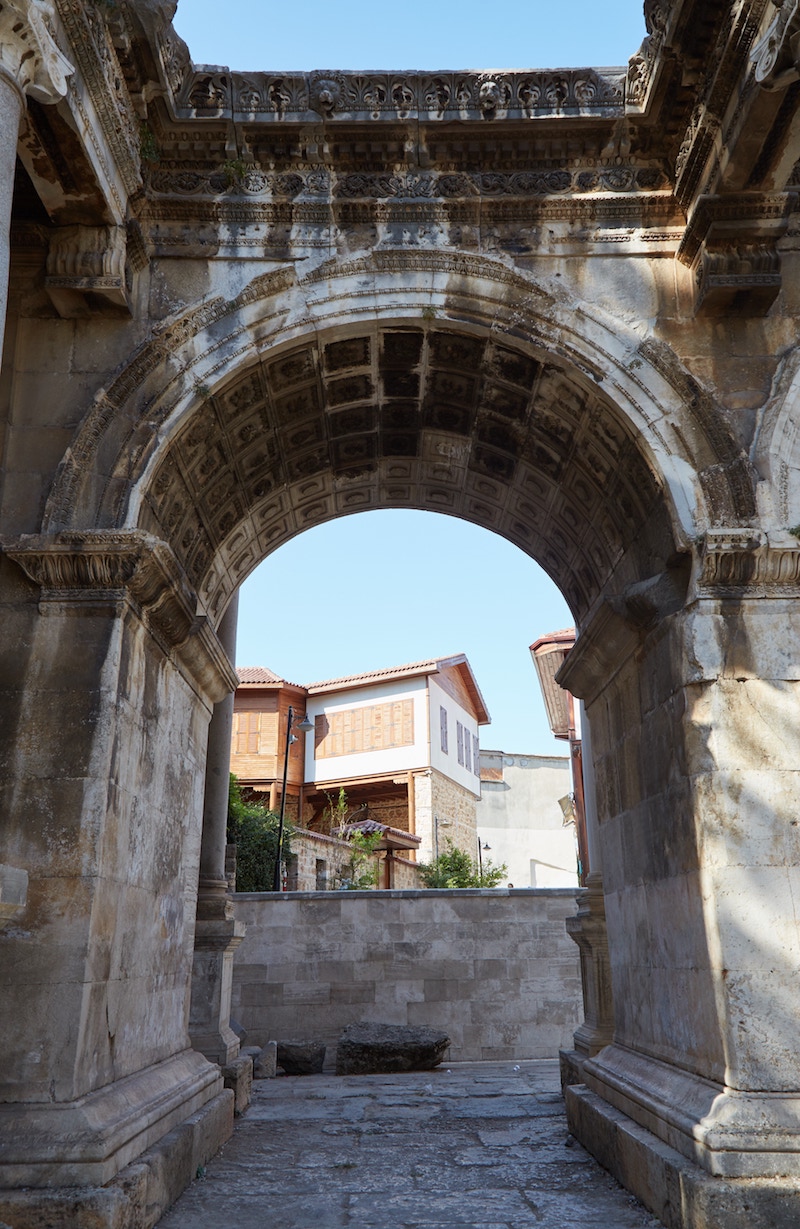
Hadrian's Gate
While there are numerous entrances to Antalya’s Old Town, the most dramatic way to enter the district is via Hadrian’s Gate. The impressive gate was built in 130 AD to mark the arrival of Emperor Hadrian, who was known for traveling extensively throughout his vast empire.
Situated in between two ancient towers, the gate consists of three arched openings, flanked by columns in the front and back. Originally, it would’ve been two stories tall, though only the bottom half remains.


Oddly, it remained hidden for centuries, as later additions to the city wall completely blocked and concealed it. It was finally cleared out and restored in 1959.
Looking down, notice the grooves in the paving stones. They’re the result of countless carts traveling in and out over the course of centuries.
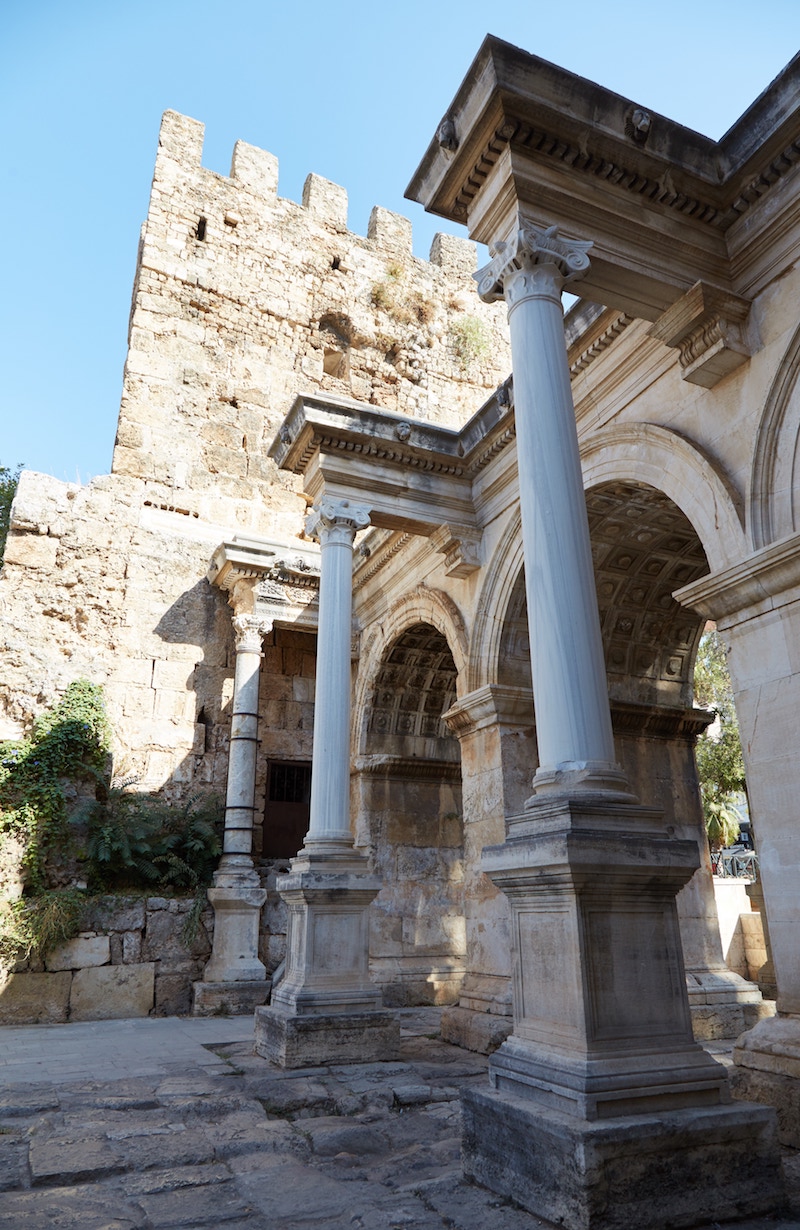

Kaleiçi (Antalya's Old Town)
Kaleiçi, the historic administrative center of Antalya, is accordingly where you’ll find most of the city’s important buildings. In addition to prominent mosques, a big part of the district’s charm lies in its well-preserved Ottoman-era houses.
Most of the surviving houses date back to the 18th or 19th centuries. But even being relatively recent, they’re a world apart from the featureless concrete constructions of Antalya’s modern districts.



The best part of Kaleiçi is that the entire area is for pedestrians only. As you casually stroll around, you can take a break at one of the many coffee shops or buy some goods at the bazaar along Uzun Çarşı Sk.
The cozy atmosphere and abundance of hotels attract many tourists to stay here, and the area has a rather commercialized feel. While Kaleiçi would indeed make a good base, those on a budget may want to stay just outside the district instead (learn more below).


Spread throughout Kaleiçi are numerous landmarks worth seeking out. One of them is the Saat Kulesi, or Clocktower. It was built in 1901 to commemorate the 25th anniversary of Sultan Abdul Hamid II’s reign.
Not far away is Yivli Minare Mosque, or the Fluted Minaret mosque. Arguably Antalya’s most famous construction, it was erected in the 13th century by Sultan Alaeddin Keykubat I. This Seljuk sultan was also responsible for many of Konya’s finest landmarks and is also remembered for his association with Rumi’s family.
The mosque just next to it was originally a Byzantine monastery. It later served as a lodge for the order of Whirling Dervishes.



A little further south is the Karatay Medresesi, a Seljuk-era building constructed in 1250. While once a theological school, its current appearance is surprisingly modern, as it’s now used as a cultural center and cafe.
There are also a few additional landmarks to check out, though they were either closed or under renovation during my visit. The Şehazade Korkut Mosque is a converted Byzantine church which was in turn built over a Hellenistic-era agora. The Suna & Inan Kiraç Müzesi, meanwhile, is a popular ethnography museum.

The western portion of Kaleiçi is also home to the Old Harbor. But we’ll cover that further down below.
While you’re free to explore in any order you like, here’s the route we recommend for those with just a day in town: From central Kaleiçi, stroll through Karaalioğu Park before walking back northeast to the Heritage Tram stop.
Take the tram to the Antalya Museum, and then walk back along the coast. You will then be greeted with a great view of the Old Harbor as you make your return to Kaleiçi.
Karaalioğu Park
South of Kaleiçi is Karaalioğu Park, which offers a fantastic view of the Mediterranean Sea, or Akdeniz in Turkish. As you approach, one of the first landmarks you’ll encounter is Hıdırlık Kulesi, another surviving landmark from the Roman era.
It consists of a circular tower atop a square base. And being situated at the water’s edge, it was long used as a lighthouse. Much later in Seljuk and Ottoman times, local rulers made sure to keep it in good shape.

The park contains several open-air cafes, while there are also plenty of benches to rest your legs. But the best reason to come is for the clear, unobstructed views of the water.
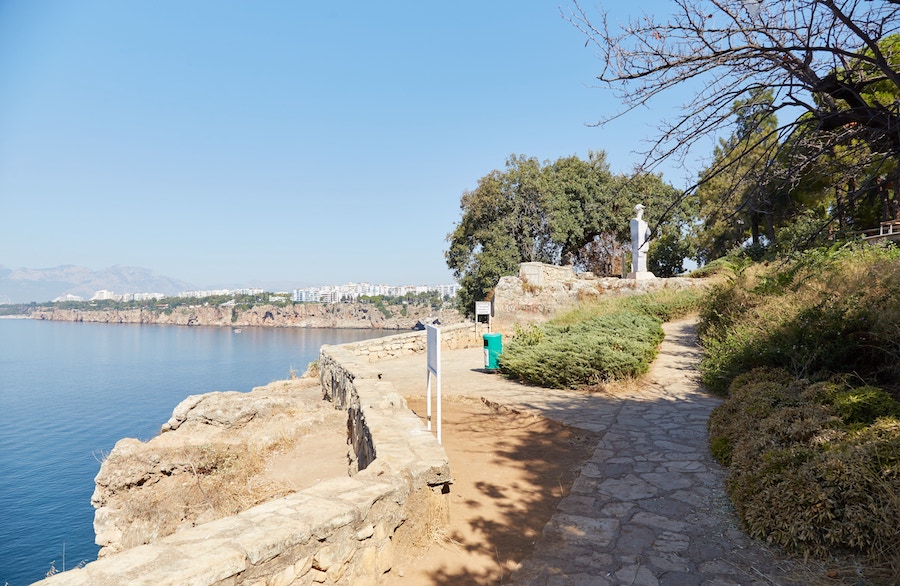
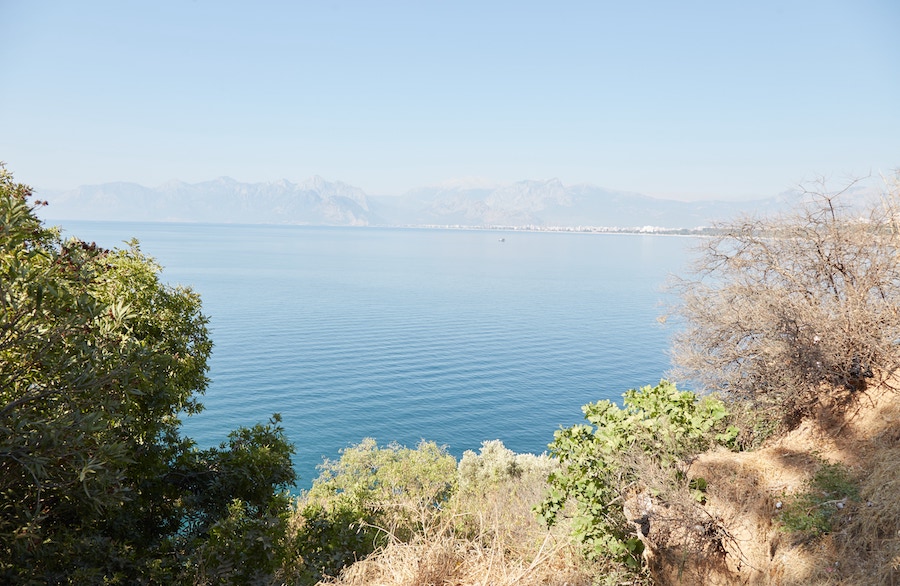
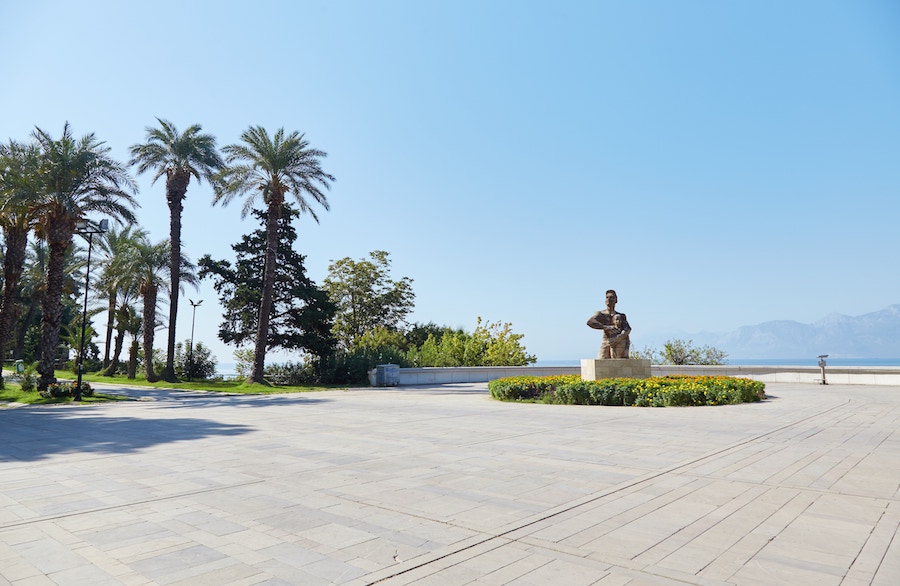
Not far from the park is the Antalya Atatürk Museum. It’s basically just a house where Republic of Turkey founder Mustafa Kemal Atatürk stayed a few times – one of many such ‘pilgrimage spots’ around the country.
Walking northeast, you can find a Heritage Tram stop back near Hadrian’s Gate, known locally known as Üç Kapılar. (This is not the same tram line as the main AnTray line.)
Trains taking you directly to the Antalya Museum depart every half hour or so.

Antalya Museum
Even for those who don’t normally visit each city’s museum, the Antalya Museum is well worth going out of your way for. It’s easily one of the best archaeological museums in the country. And it’s a must for those making day trips to historical sites around the region – especially Perge.
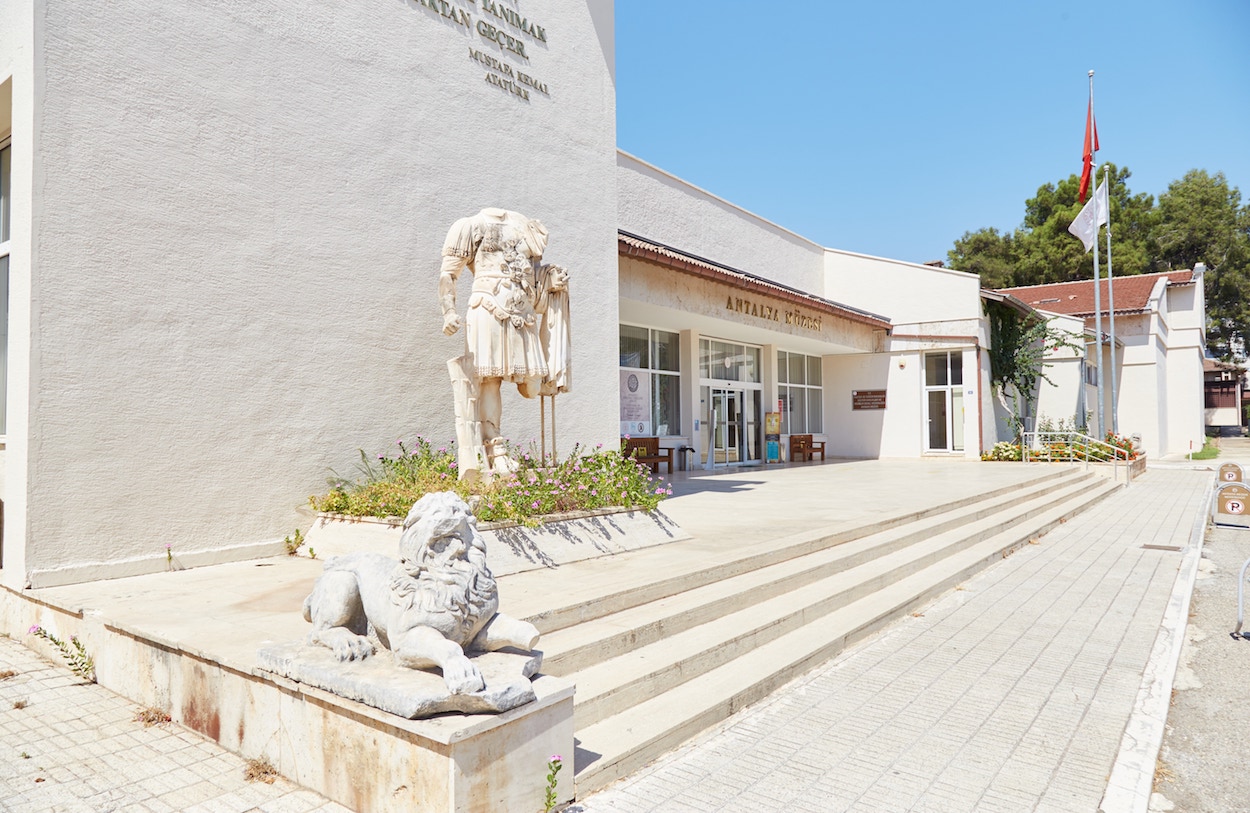
At the time of my visit, entry cost 45 TL. The staff will likely promote a museum pass for the entire Mediterranean region, valid for 7 days. Prices are always subject to change, but it cost 325 TL at the time of my trip.
Inconveniently, there was no price list allowing visitors to calculate how much they’d save. But I figured that even if everything in Antalya Province cost 50 TL, I still wouldn’t save much, if any, money. There’s only so much one can see in a week.
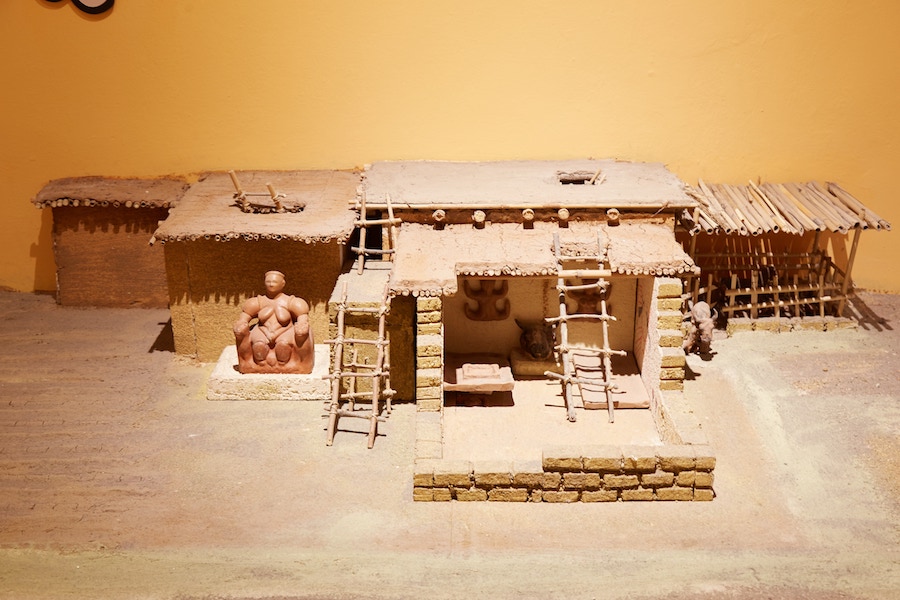
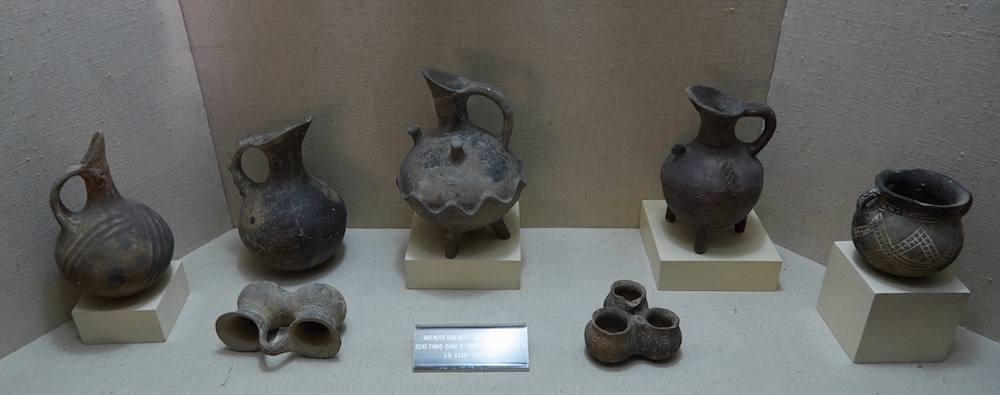
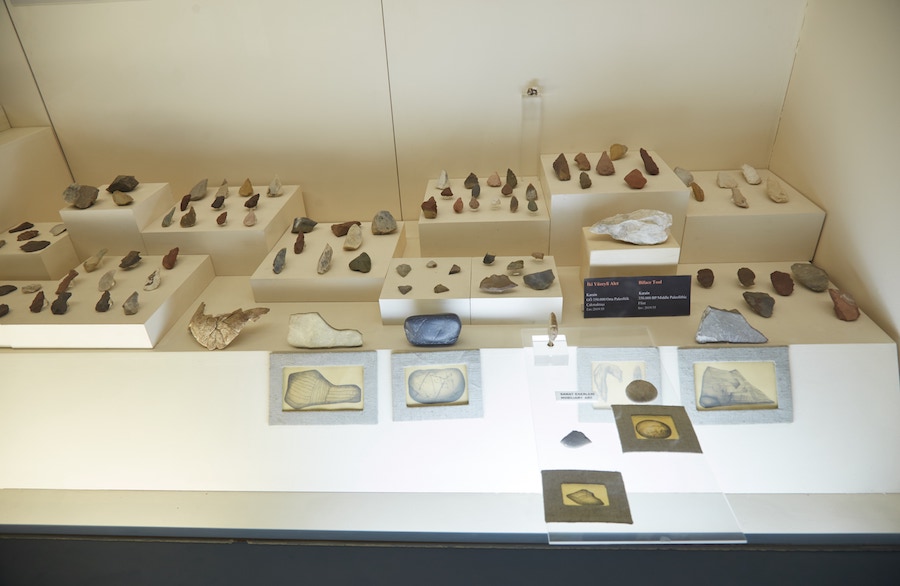
As with most archaeological museums, the Antalya Museum starts off with the Neolithic and Mesolithic ages. There’s even a model of Çatal Höyük, a Neolithic city in neighboring Konya Province.
You’ll also find items on display from the Karain Cave. Situated about 30 km northwest of Antalya, it’s the largest cave to have been inhabited in Turkey. It’s also among the oldest, with people living there from Paleolithic times through the Bronze Age.
What follows are various small collections of other archaeological sites around the province, mostly from the Hellenistic and Roman eras.
But the real highlight of the museum – both in terms of quantity and quality – is the vast collection of sculptures uncovered from the ancient city of Perge.

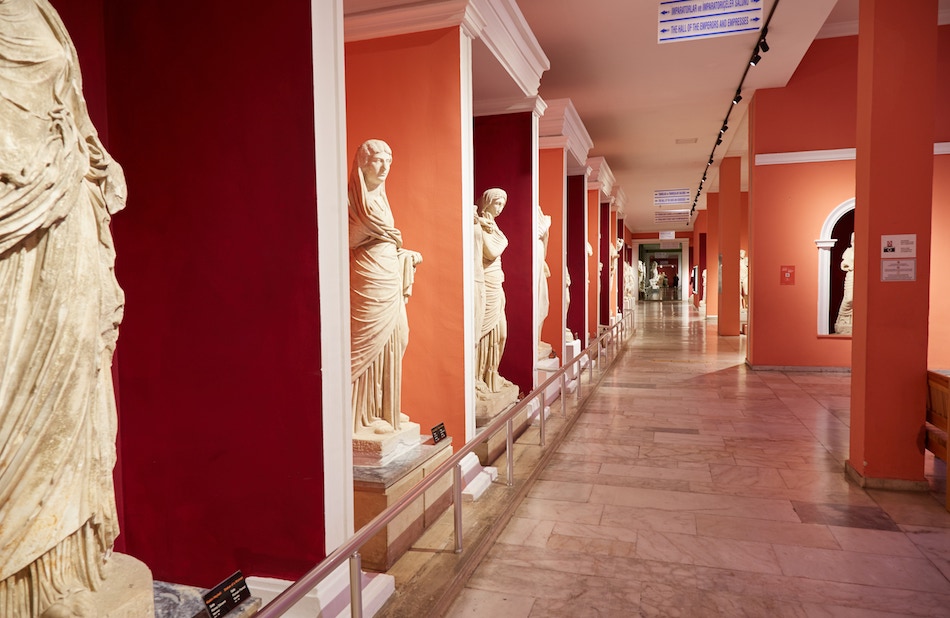
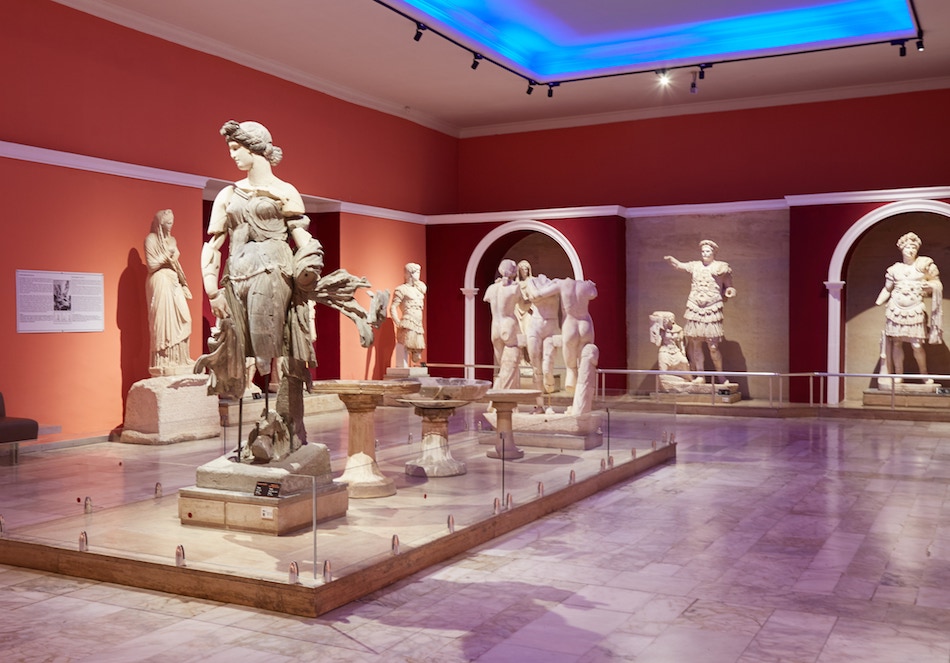
Perge was an ancient Greek and then Roman city situated about 15 km east of central Antalya. Visiting the site is a must during your stay in the region, which can be done in tandem with Aspendos.
In Roman times, Perge was renowned for its high-quality sculptures. There are dozens of Perge sculptures on display at the museum, most of which depict Greek deities plus a few Roman emperors. Most, however, are just Roman copies of older Greek designs.

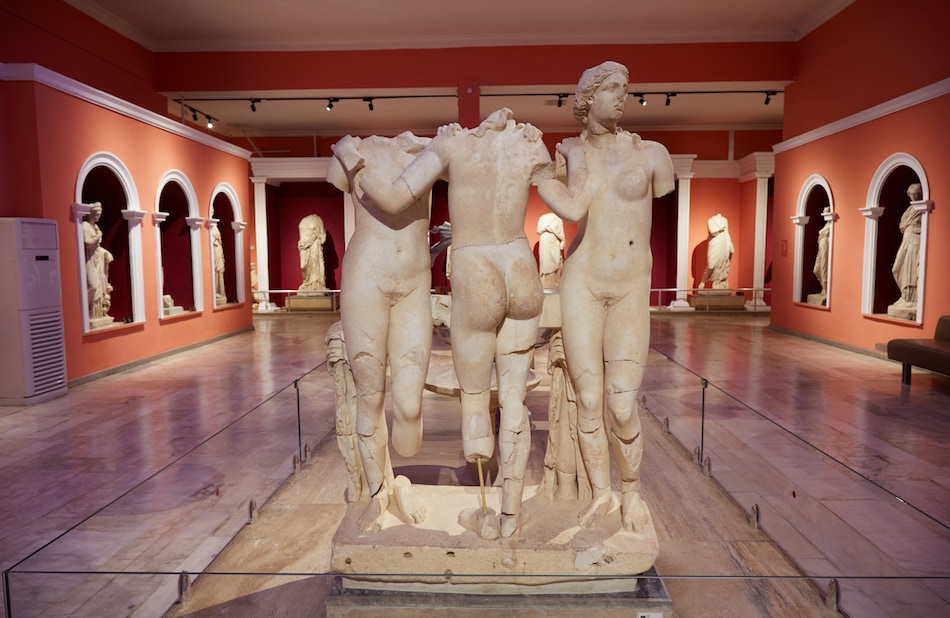
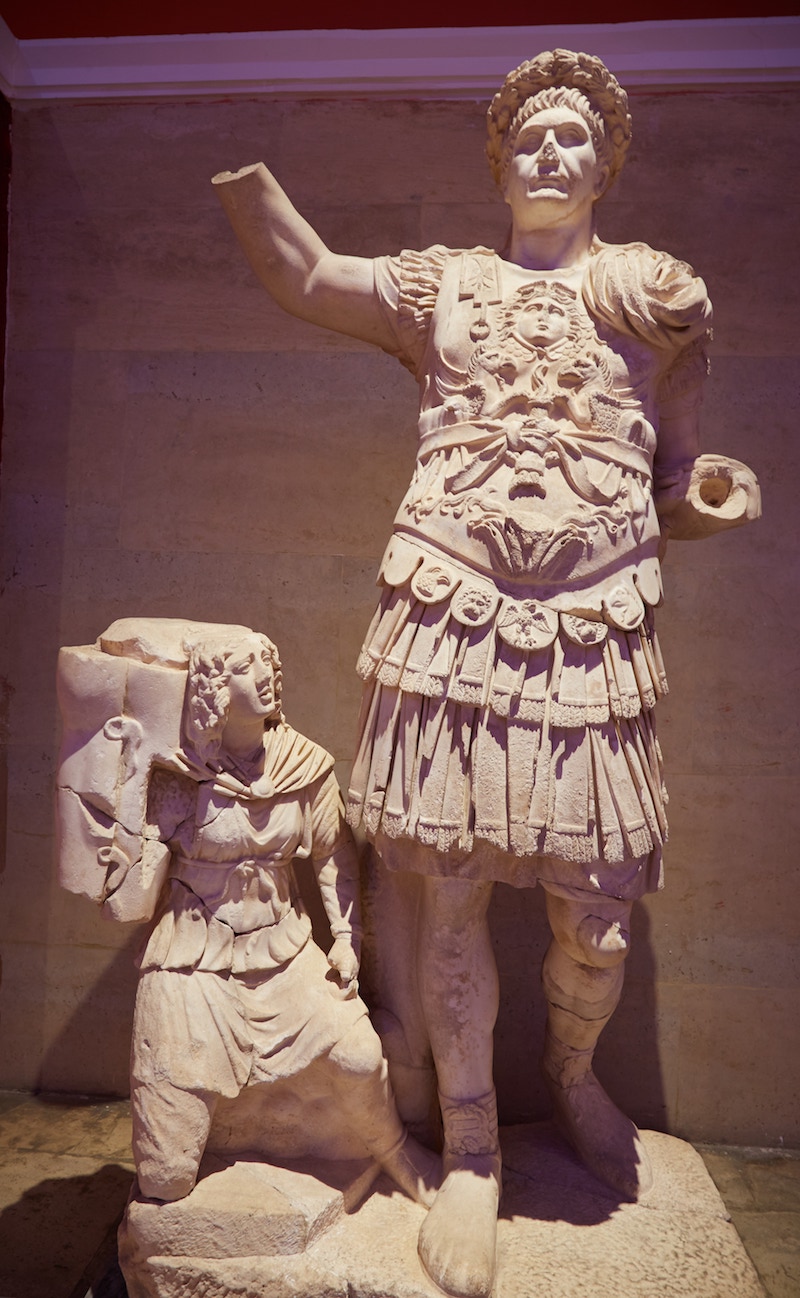
Aside from the sculptures, another highlight of the Antalya Museum is its large collection of sarcophagi. Yet again, most of the remarkable items on display come from Perge.

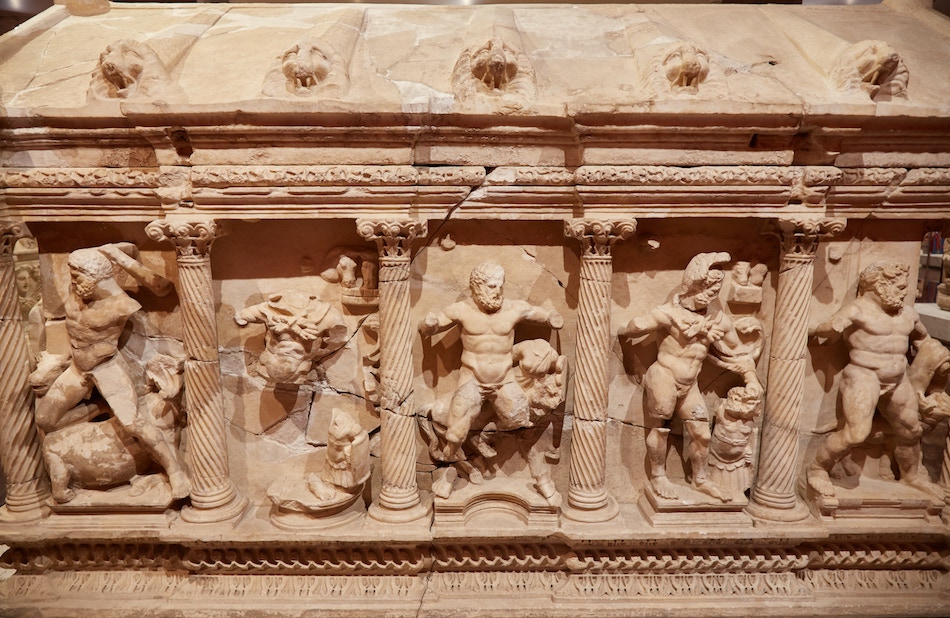
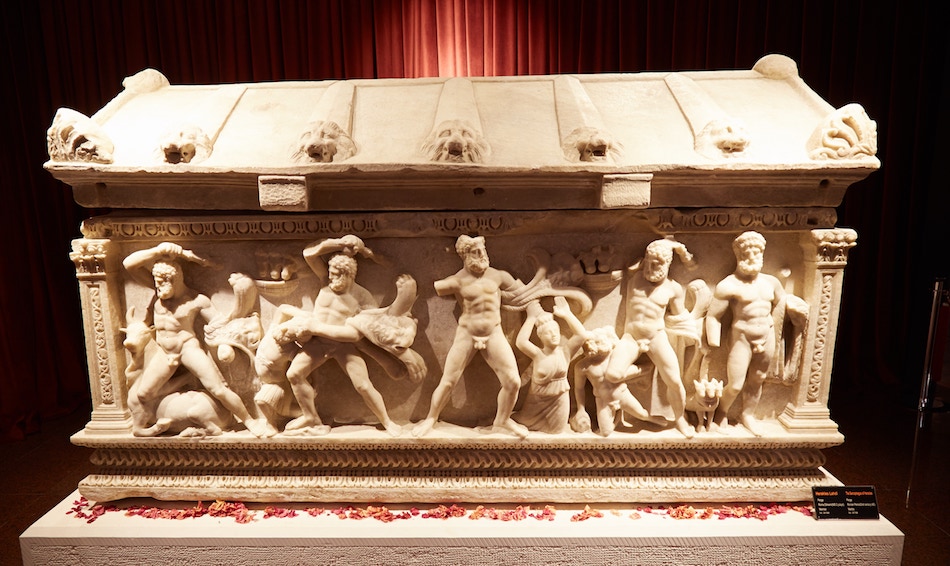
The level of detail in some of the pieces is astounding. Embedded into the solid stone are entire elaborate scenes that look like they could come alive at any moment.
Three major sarcophagus types are on display here: the Pamphylian type, featuring garlands held up by Nike, the Sidemara, or columned type, and the medallioned type.
Arguably the most striking of all is the ‘Dionysus Sarcophagi,’ also from Perge.
Additionally, multiple Lycian-style sarcophagi are on display, though you’ll have plenty of chances to see them on-site throughout the region.
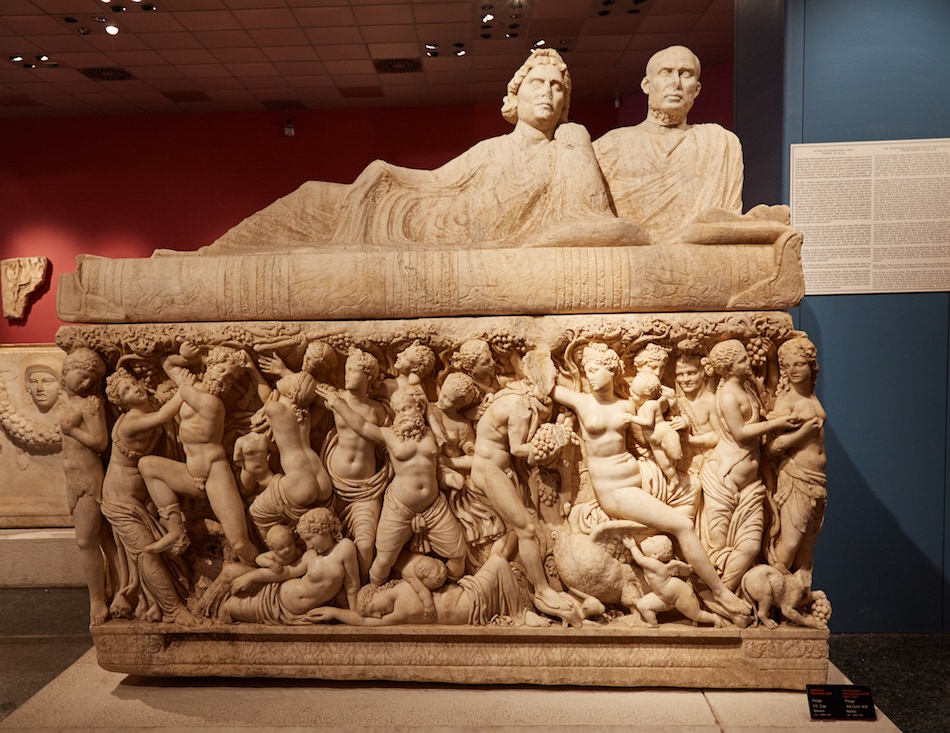
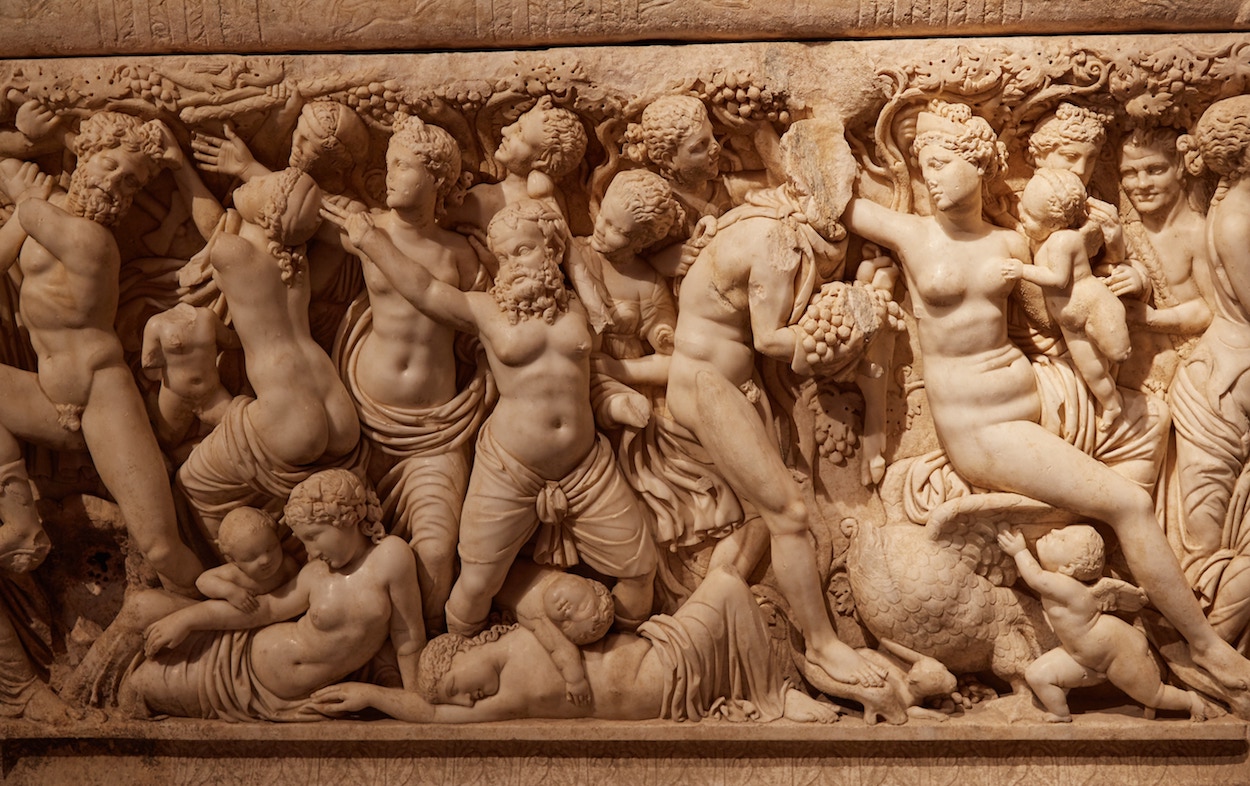
Konyaaltı Beach / Atatürk Parkı
The Antalya Museum is situated right by Konyaaltı Beach, the city’s most popular. If you have multiple days in town, it would be a good idea to bring your swim gear with you to the museum and take a dip afterward.
I didn’t end up visiting Konyaaltı Beach myself, though I did go for a swim at Lara Beach on the other side of town. It was nice for a short visit, but it was rather crowded, and Lara was among the dirtiest beaches I visited in Turkey.

Though Lara Beach seems to get higher praise on the internet, Konyaaltı appeared to be the nicer and less crowded of the two. Anyway, Antalya Province has plenty of other towns that are more ideal for swimming. Olympos, Phaselis and Kemer are just a few examples.
Whether or not you visit Konyaaltı, you can enjoy some great views of the water by walking back toward Kaleiçi via Atatürk Parkı.


Despite the name, Atatürk Parkı is not really a park. It’s a long stretch of land which is full of fancy restaurants. But you can just stick to the walking trails and take in the scenery instead.
And as you make your way back to the center, you’ll be greeted with a superb view of Antalya’s Old Harbor from above.


The Old Harbor
The bustling Old Harbor is situated just in front of the restored city walls of Kaleiçi. From the viewpoint which overlooks it, you’ll also get a clear of the Fluted Mosque and other landmarks over to the side.
After admiring the views, you can then take a public (but always crowded) elevator to the lower level.
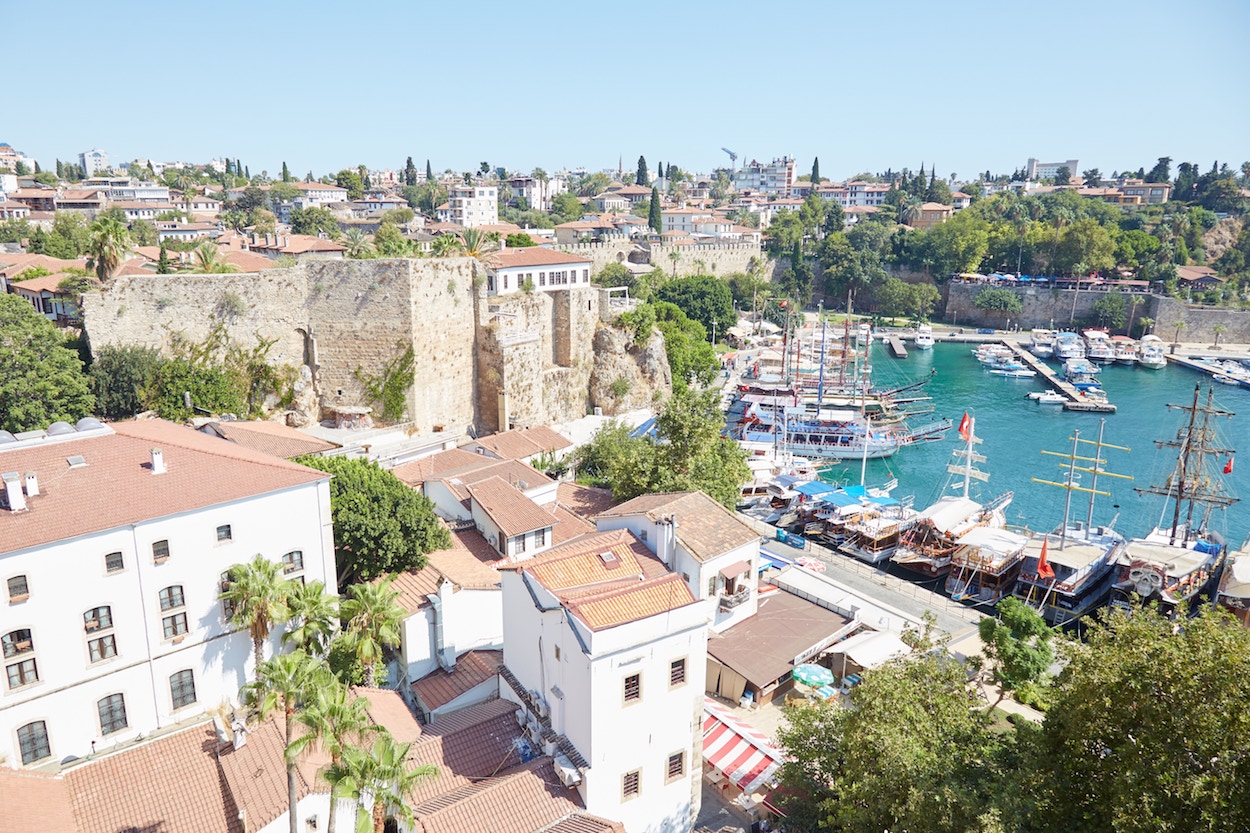

The marina is as touristy as it is pretty. In addition to souvenir and snack stalls, you’ll encounter loads of tour boats taking visitors to different landmarks around the area. As with much of Antalya, prices are quite high by Turkish standards.
One of the main attractions to see by boat is the Düden Waterfall, some 10 km away. It cost €20-30 for a short excursion. While the waterfall surely looks great from the sea, you can also see it from above by taking a cheap public bus (more below).
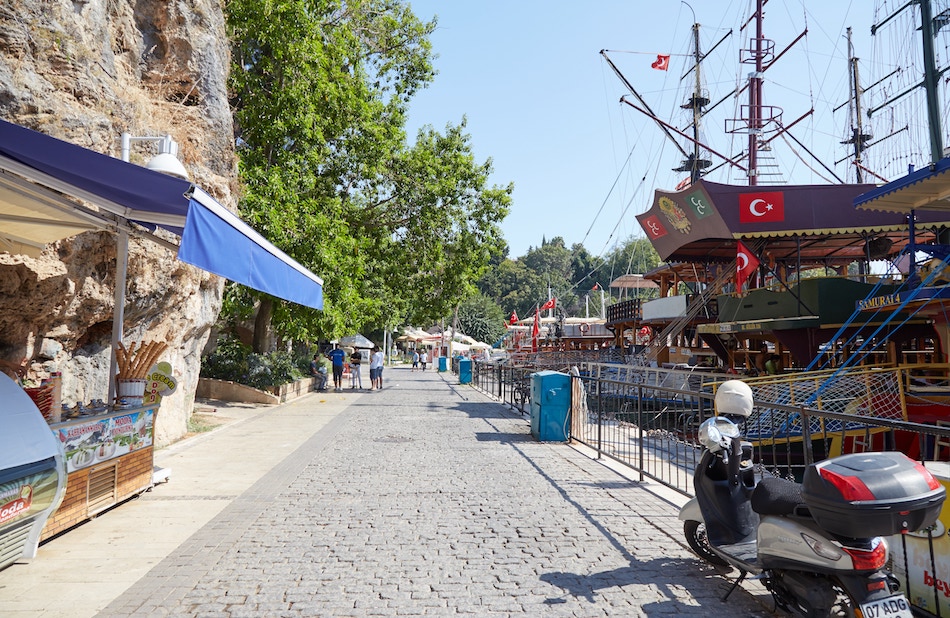
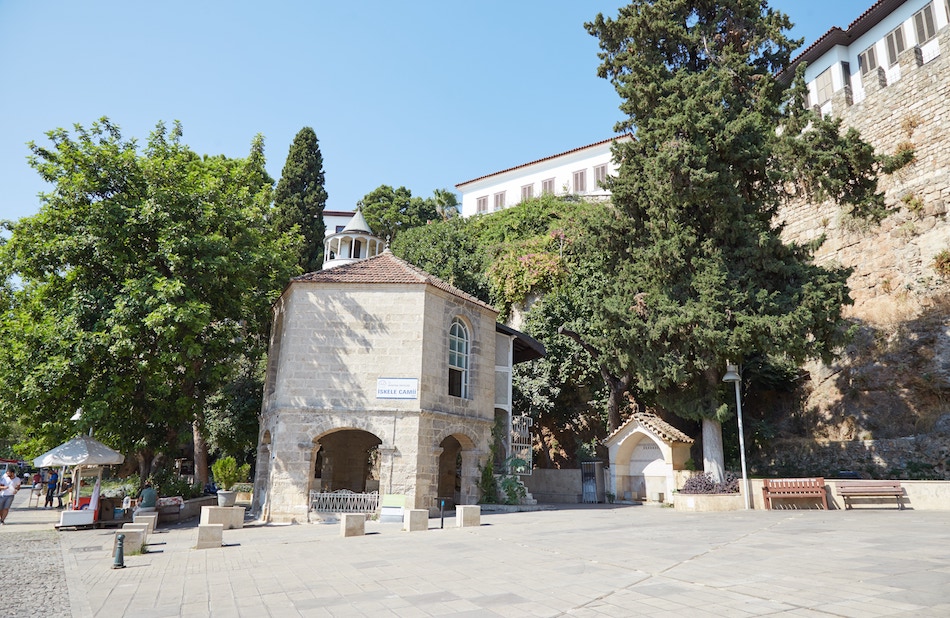
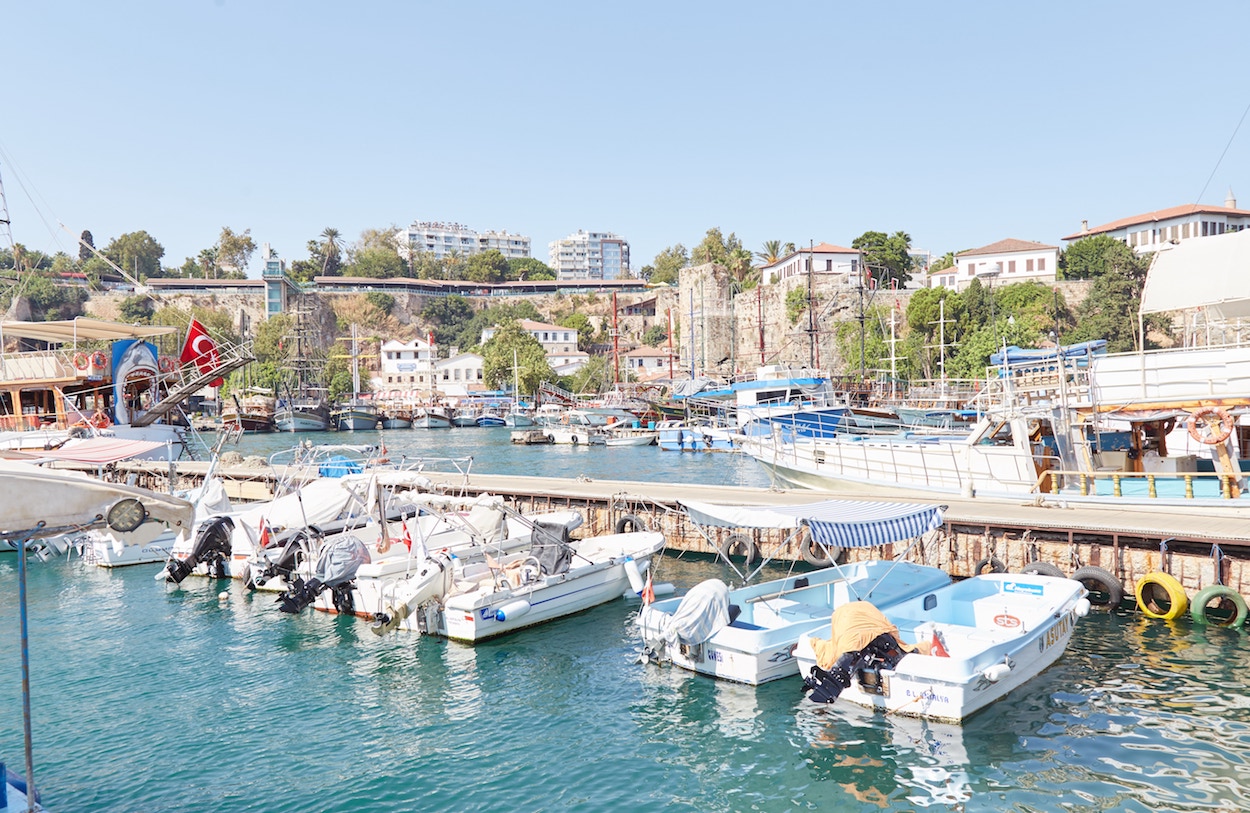
Düden Waterfall
Performing an image search of Antalya, the top hits are typically pictures of white waters gushing over some cliffs and into the sea. But iconic Düden Waterfall is actually quite a distance from the city center.
As mentioned above, the most popular way to get there is by boat tour departing from the marina. But if you’re on a budget, simply hop on a public bus. Google Maps should tell you the correct bus from wherever you are.
Keep in mind, though, that there are two Düden Waterfalls, one of which is much further upstream and inland.

As pretty as it looks, the Düden Waterfall is entirely artificial. All of the water you see flowing over the cliff is being pumped from the nearby Kepez Hydroelectrical Complex.
Aside from enjoying the scenery, you can also take it easy in the nearby large, grassy park. Despite being so far from the center, this part of the city is especially well-developed and modern.

If you’ve taken the bus to Düden Waterfall, you may want to head over to Lara Beach afterward. They appear relatively close on the map, but I wouldn’t recommend walking. The nearest, westernmost beaches are all private.
Coming from Düden, you’re best off taking another bus, though the Heritage Tram mentioned above heads to Lara as well.


Additional Info
Given its size and popularity among tourists, Antalya is one of Turkey’s easiest places to reach.
Antalya Airport is serviced by not just most other airports in Turkey, but plenty throughout Europe as well.
You will also easily find direct buses to Antalya from all over the country. Both long-distance coach buses in addition to smaller buses from nearby coastal cities are abundant.
The otogar (bus terminal) is quite a distance from the city center, but you can take a tram back and forth. Antalya has lots of machines situated throughout the city at which you can easily top up your transport card.
The most popular place to stay is right within the Kaleiçi, or Old Town district. As mentioned above, this a pleasant district lined with historical buildings and is completely pedestrian friendly. It almost acts as a city within a city.
It does, however, feel very touristy. The restaurants and shops are mostly oriented toward international tourists rather than locals, and the prices reflect that.
I’m a budget traveler who prefers a private room with an attached bathroom. I chose a hotel called Ay Otel 2, located in central Antalya and just outside Kaleiçi. This gave me the best of both worlds. I had easy access to affordable, local-oriented restaurants and shops, while also being able to walk to Kaleiçi in a few minutes.
Best of all, it’s located within short walking distance of the tram stop which connects with the otogar (bus terminal). You can even take the tram all the way to Perge.
If you have more money to spend, there’s no shortage of high-end accommodation throughout the city. Aside from staying in or near Kaleiçi, you might want to consider staying close to the Antalya Museum/Konyaaltı Beach, or perhaps by the Düden Waterfall/Lara Beach.
Another good option would be staying near the otogar. The city of Antalya is a great base for day trips around Antalya Province. And by the end of my several-day stay, I’d grown tired of taking the tram over to the bus terminal and back almost daily. Were I to do it over again on the same budget, I’d choose somewhere within walking distance of the otogar.
All of the locations in or around the Kaleiçi district can easily be accessed on foot.
As mentioned above, there is a special vintage tram line connecting the Old Town area with the Antalya Museum / Konyaaltı Beach (not to be confused with the main AntRay tram line). But if you have the energy, it’s a good idea to walk one way to enjoy the scenery.
Getting to Düden Waterfall from the city center requires a local bus. You can easily find out which bus you need by using Google Maps. Of course, you can also enjoy a more scenic (but considerably more expensive) boat ride to see the waterfall from below.
While the Turkish government isn’t quite as extreme as China when it comes to online censorship, you’ll probably want a decent VPN before your visit.
I’ve tried out a couple of different companies and have found ExpressVPN to be the most reliable.
Booking.com is currently banned in the country (at least when you search for domestic accommodation). However, there are actually quite a few Turkish hotels listed on there anyway. And many them don’t even appear on Hotels.com, which hasn’t been banned.
Over the course of my trip, I ended up making quite a few reservations with Booking.com and was really glad I had a VPN to do so.
Another major site that’s banned is PayPal. If you want to access your account at all during your travels, a VPN is a must.
While those are the only two major sites that I noticed were banned during my trip, Turkey has even gone as far as banning Wikipedia and Twitter in the past.
